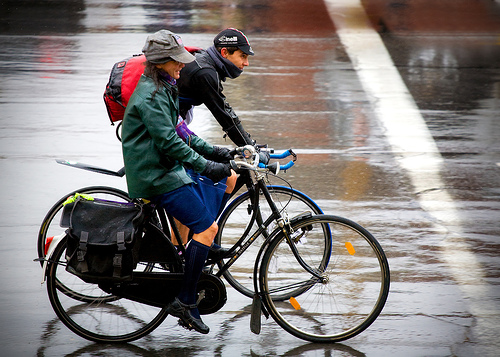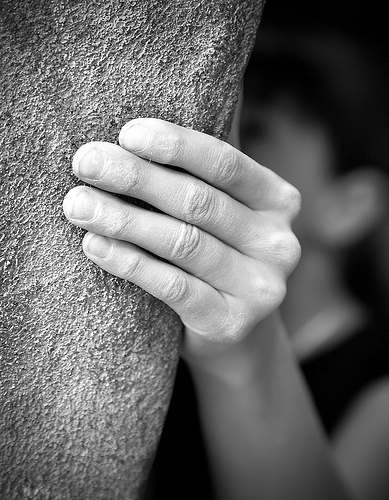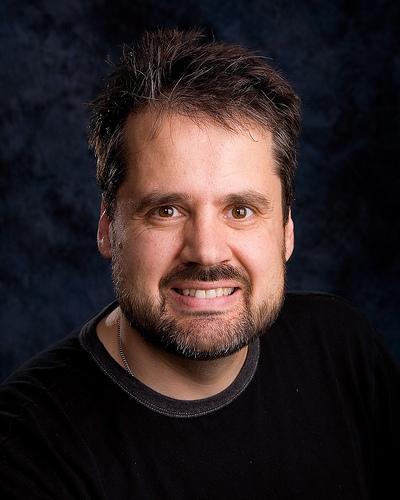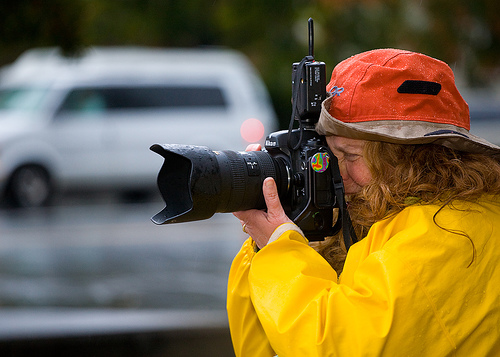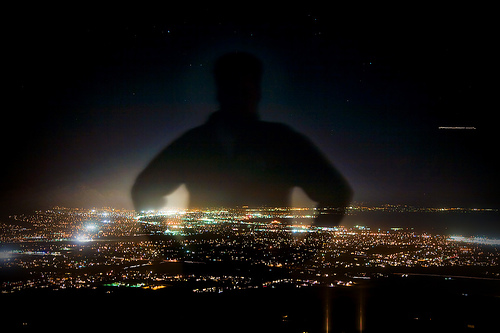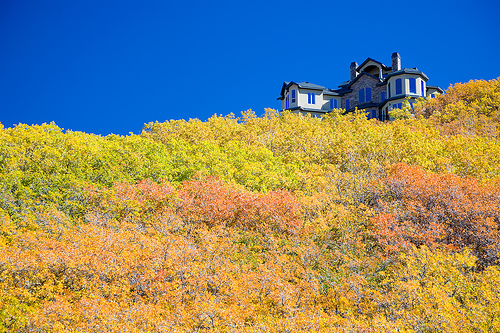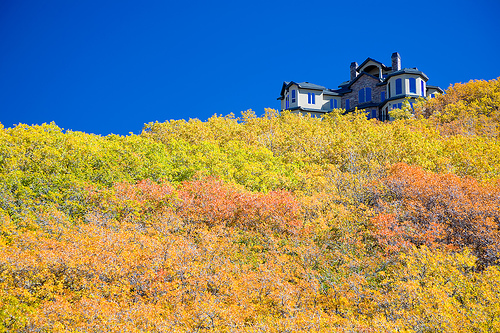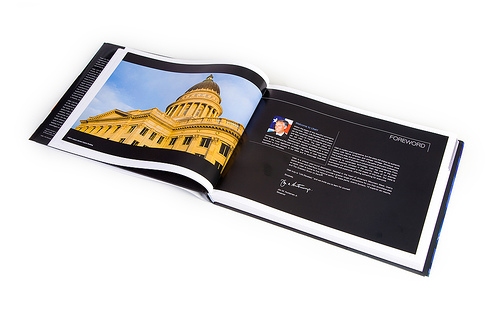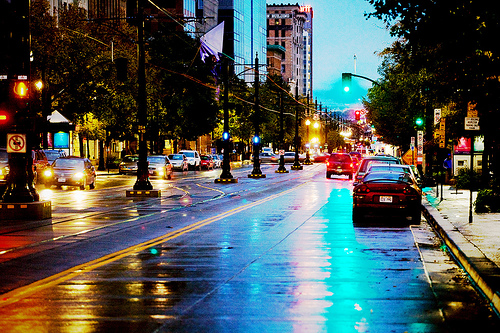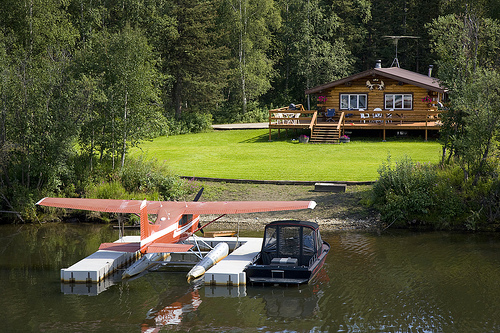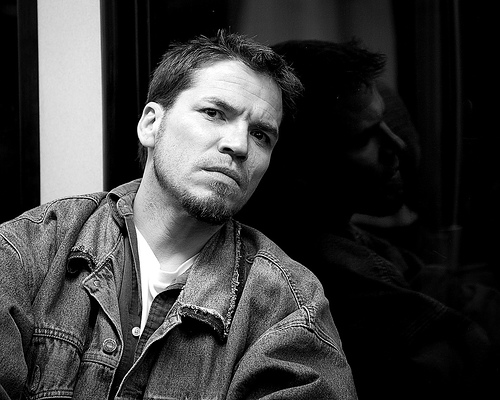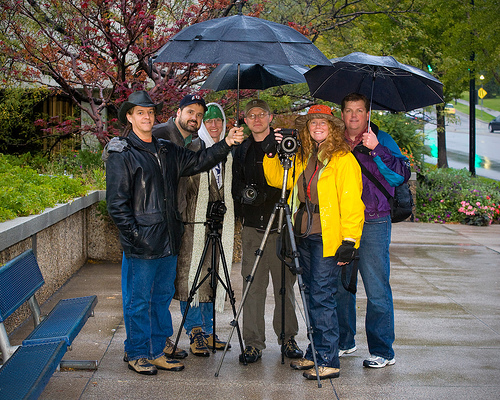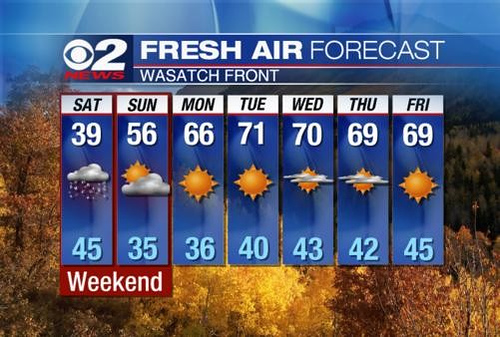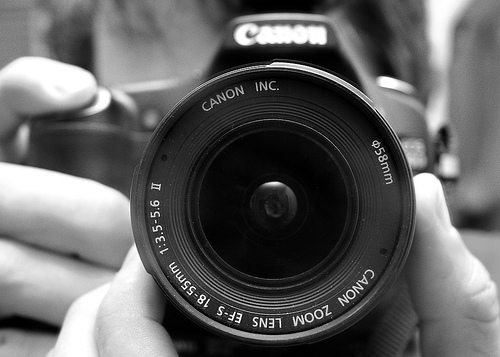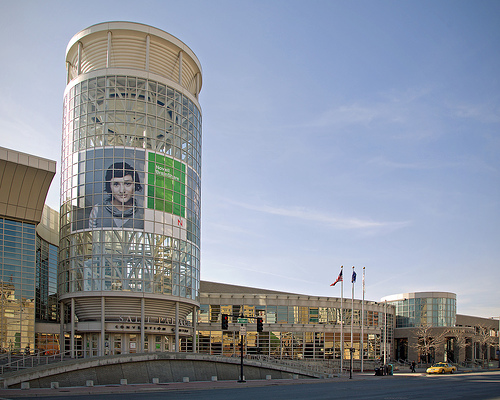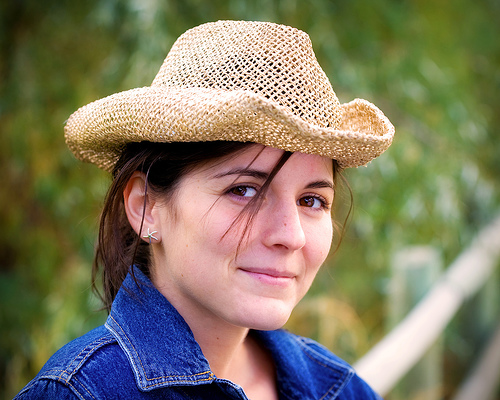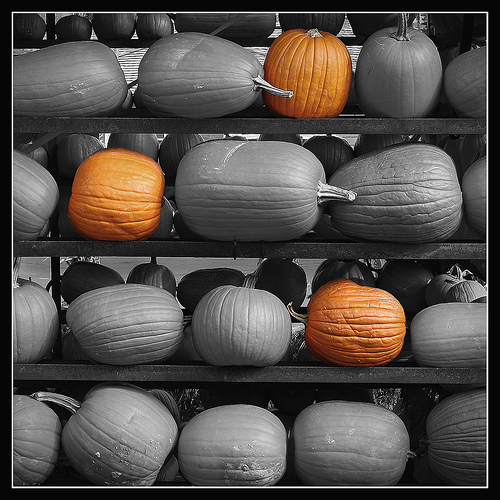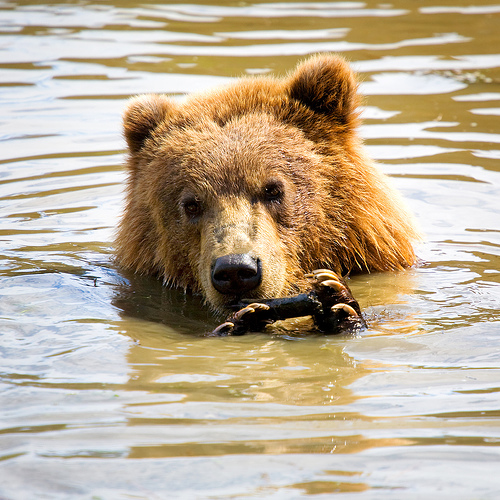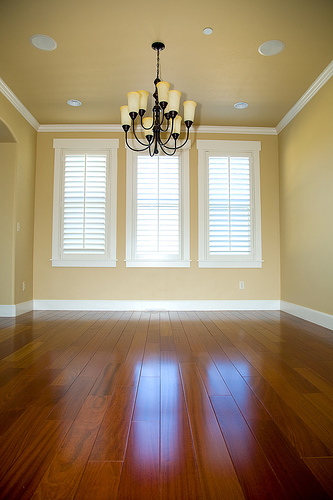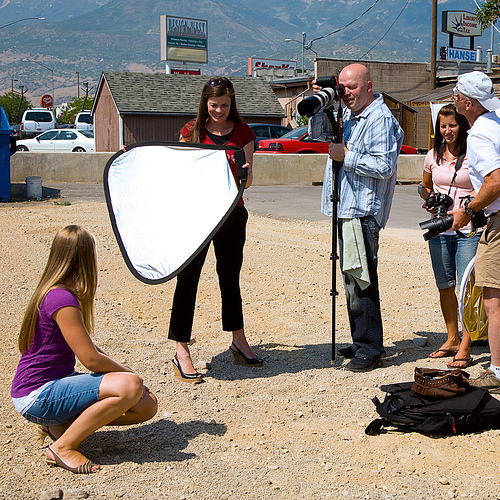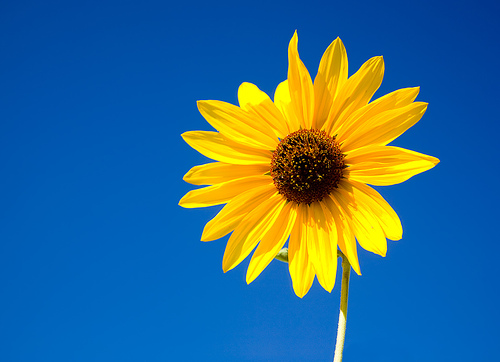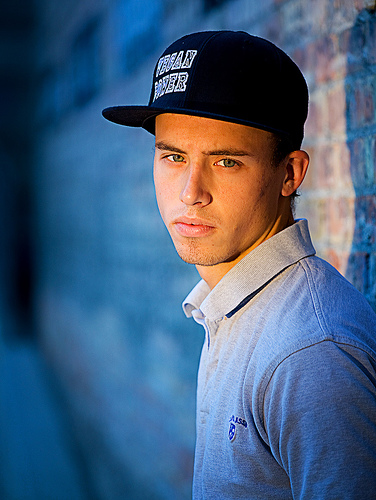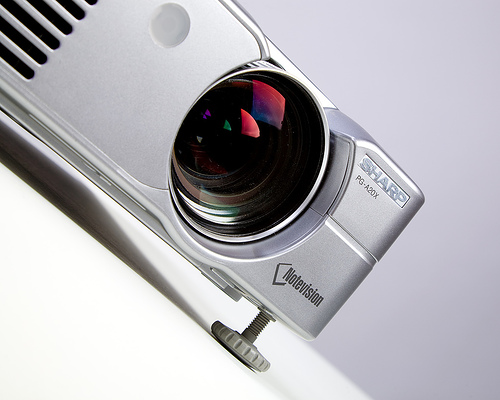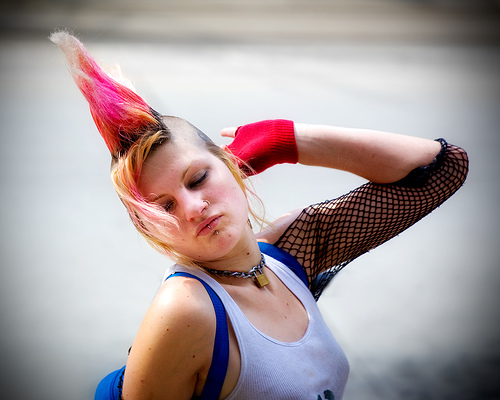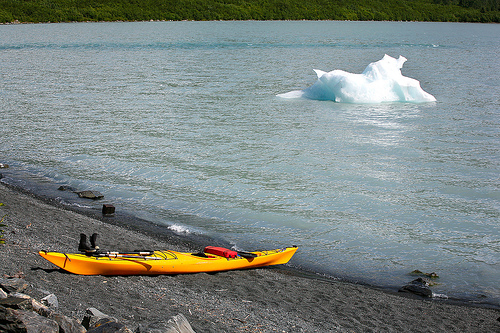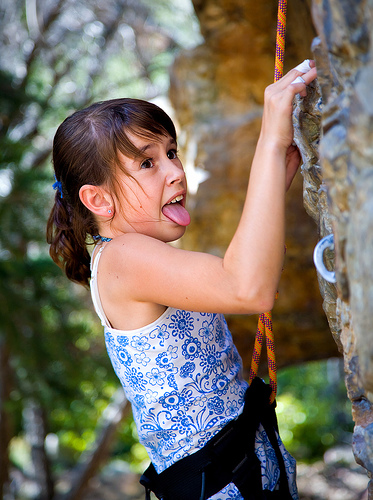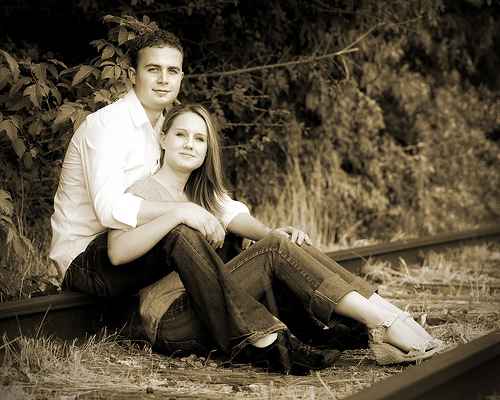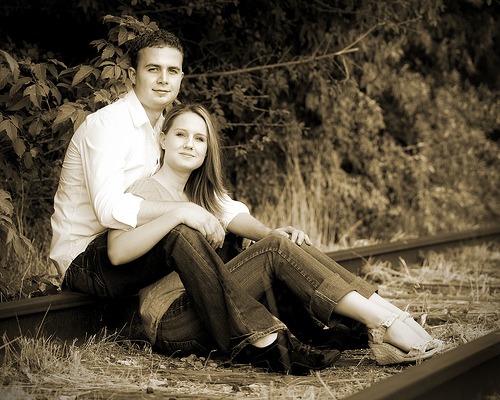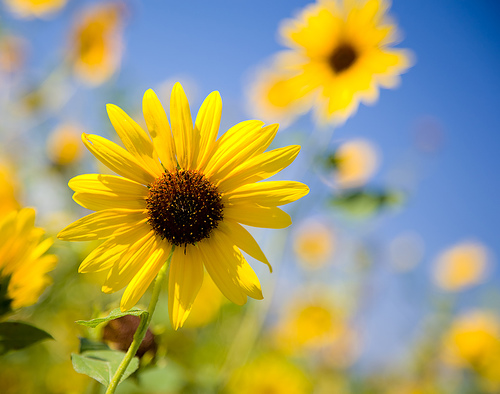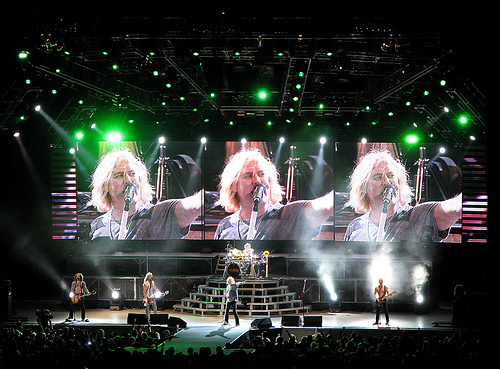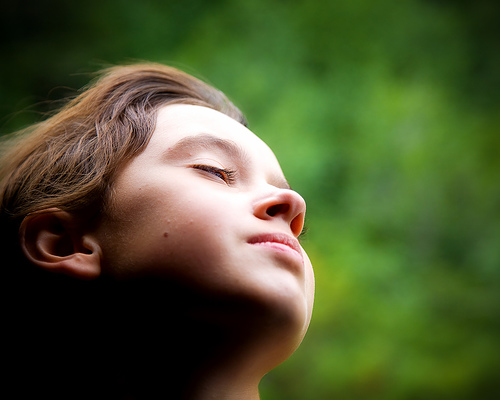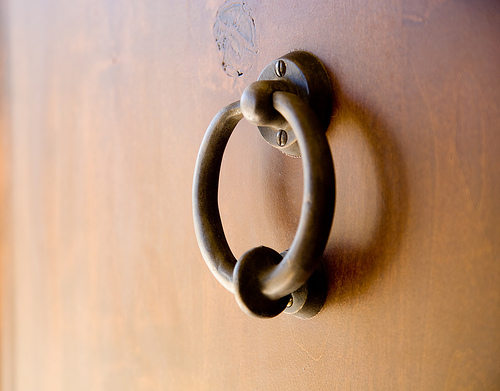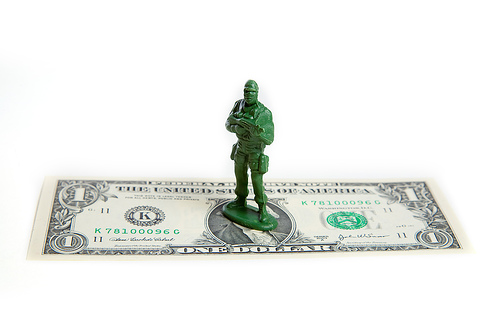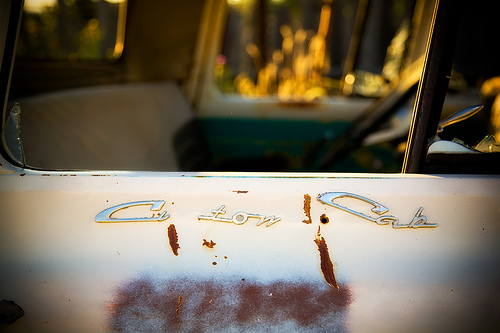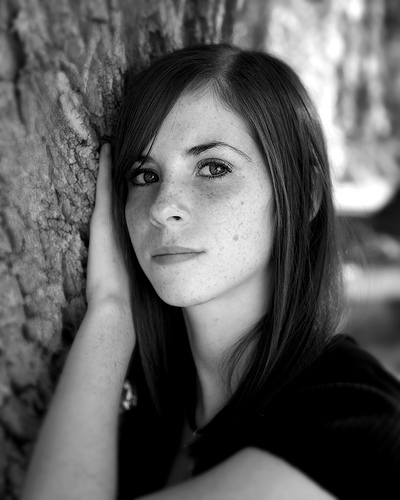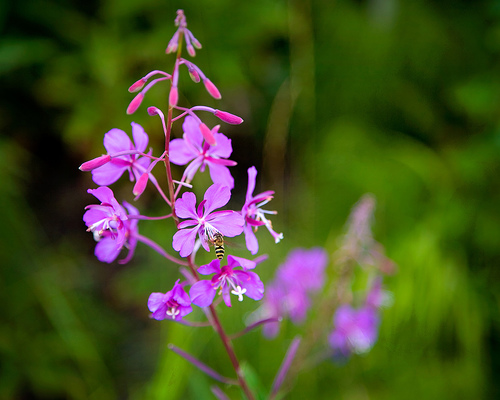October 18, 2007
“You’re So Vain….”
Today’s capture is a quick-n-dirty test shot of myself I did in the studio with two of my new lights. These lights are more powerful than my other lights and offer MUCH more adjustment.
For this shot I have a 24×36 softbox right of the camera for the main light and a 40″ umbrella behind as fill. The hairlight (which missed it’s target a bit) is a snooted monolight in the back left. This is my standard portrait setup. I usually start with this arrangement and then deviate from there depending on the look I want.
Canon 5D, Canon 24-105 f/4L lens – 1/125 second, f/10, ISO 100
Labels: photography, portrait, studio
October 17, 2007
Photowalking Salt Lake City – This Friday Night
There is another Photowalking event coming up on Friday evening (October 19) beginning at 5:30 pm. Here are the details from Ann Torrence:
Theme: The Grunge/Gentrification Interface
Location: Meet at the corner of 500 West, 200 South. (Parking is available in 100-200 block of 500W)
The walkabout is from 500W 200S to the new (?) depot at 6th west, down 300 S toward the back side of the Rio Grande station (which could be awesome in golden light), return north on 5th west toward the galleries at the corner of 200S and 500W as people start to arrive. If they are still working on the rails that late, there could be some fun shots after dark with their lights. Today (Tuesday) they are pouring the concrete on the turn at 4th west, who knows how far they will get. But they told me they are working late shifts.
I am probably the last person in SLC to realize that the construction on 200S is connecting the new Frontrunner to the TRAX, but the gentrification is happening RIGHT NOW, and there are photos that will be possible today but not next week or month. Lots of old brick with faded paint signs, Thomas Electric’s pile of rusty motors along Eccles Street, the old brothel (had a long chat with the bricklayers working on 200S about the area, naturally they had read the historic marker about a brothel.) The new/remodeled depot reminds me of an arcade in Auckland, NZ.
Late afternoon light is going to be as good, if not better, than after dark light. There’s not as much artificial lighting as on the east side to work with, except the gallery windows. At least 4-5 galleries in the 2×2 block area are participating in gallery stroll, so there should be some people about.
Special considerations: The safety factor needs to be considered, but I think we can work with it, if folks stick together and act like we are in an urban area. I’ll have a couple bills in an outer pocket for panhandlers, and will be traveling light.
I will be in Provo photographing a wedding and won’t be able to attend this photowalk, but I will catch up with everyone on the next one. The West side of Salt Lake City is an intriguing area and should provide plenty of interesting subject matter to shoot.
These events are non-competitive and a great way to get to socialize with other area photographers. Anyone is welcome to attend.
For more details (or to ask any questions), visit the Photowalking Salt Lake City Flickr group at www.flickr.com/groups/photowalkingslc.
p.s. Let’s hope it doesn’t rain this time 🙂
Canon 5D, Canon 70-200 f/4L lens – 1/200 second, f/4, ISO 800
Labels: photography, photowalking, salt lake city
October 16, 2007
Someone to Watch Over Me
I took this photograph last week on a ridge overlooking Lehi, Utah. I found the location a few days earlier and thought it would make a nice location to try some long exposure night shots. Even though I am not entirely pleased with how this image turned out, I thought it was worth sharing how it was done.
The shadowy figure looking over the city was created entirely in camera with a simple technique. I set the exposure for a shutter speed of ten seconds and put the camera into self-timer mode. I started the timer and took a stance in front of the camera standing as still as possible. Once I heard the shutter open, I counted to five and then quickly exited the frame. The result is the transparent outline of my body in the image.
This technique is similar to the way I created the Weeping Angels image last year (though I like that result MUCH better).
Canon 5D, Canon 24-105 f/4L lens – 10 seconds, f/4, ISO 100
LeggNet’s Digital Capture
© Rich Legg, Inc. All rights reserved.
October 13, 2007
20 Pumpkins on iStockphoto
Yesterday afternoon this photograph of a load of pumpkins was my 5,000th image download to sell on iStockphoto.com. My portfolio on the popular microstock photography website has grown to over 850 images today from a mere 77 in March and my sales have shown a comparable increase. I am pleased to say that my October revenue will be over triple the amount I earned in June.
My goal for the future is to continue to grow my iStock portfolio by a minimum of 10 percent each month. In doing so, I anticipate my sales to grow at an equal or higher percentage. I am finding that my approval percentage (each image submitted to iStockphoto has to be personally inspected and approved) is getting better the more I upload to the site. I now have fine tuned my recipe for post-processing images and I average over a 90% approval percentage on my photos (up from around 50% early on).
As I said in an earlier post, I look forward to continuing to add images to my portfolio and monitor the growth. Is this a sustainable business long-term? We’ll continue to wait and see.
Canon 30D, Canon 24-105 f/4L lens – 1/125 second, f/7.1, ISO 100
LeggNet’s Digital Capture
© Rich Legg, Inc. All rights reserved.
October 12, 2007
Autumn in Utah: Blue & Gold
The autumn colors have arrived full force in Northern Utah. I made this capture on a beautifully clear day atop Traverse Ridge. The use of a circular polarizer filter really helped the blue sky to stand out against the golden leaves.
Canon 5D, Canon 24-105 f/4L lens – 1/40 second, f/5.6, ISO 100
Labels: autumn
October 12, 2007
Autumn in Utah: Blue & Gold
The autumn colors have arrived full force in Northern Utah. I made this capture on a beautifully clear day atop Traverse Ridge. The use of a circular polarizer filter really helped the blue sky to stand out against the golden leaves.
Canon 5D, Canon 24-105 f/4L lens – 1/40 second, f/5.6, ISO 100
LeggNet’s Digital Capture
© Rich Legg, Inc. All rights reserved.
October 10, 2007
Published: Utah, Life Elevated
I received a nice surprise yesterday when the UPS man dropped off a copy of Utah, Life Elevated by Kimball Thomson. The 200+ page book is primarily for the State of Utah to use as a recruitment tool for companies looking to relocate or expand into this area.
In February of this year I was contacted by the publisher to see if I was interested in doing freelance photography work for the book. The pay per image was reasonable so I accepted the offer. I am pleased to say that they used 11 of my images including four as full-page section dividers. While digital is cool, I never tire from seeing my photographic work in the physical “hold in my hands” printed form.
Today’s image is my favorite from those used in the book. Not just because of the particular photo, but also with the placement. It is a shot of the Utah Capitol Building at sunset and it is placed adjacent to the book’s foreword written by Utah Governor Jon Huntsman, Jr.
Canon 5D, Canon 24-105 f/4L lens – 1/125 second, f/11, ISO 100
Labels: salt lake city
October 10, 2007
Down on Mainstreet
I made this capture while crossing Salt Lake City’s Main Street on a rainy Saturday night . The saturated color and high contrast were added using a Cross Processing effect in Photoshop. My favorite parts of this image are the the reflection created by the wet asphalt and the lines leading from the lower corners. The fact that the technical quality (noise, blur, etc.) of the image is rather low but the visual appeal is high is simply a bonus.
Canon 5D, Canon 70-200 f/4L lens – 1/30 second, f/4, ISO 250
LeggNet’s Digital Capture
© Rich Legg, Inc. All rights reserved.
October 9, 2007
The Daily Commute
October 8, 2007
On the Train
October 7, 2007
Photowalking in the Rain
The Photowalking Salt Lake City event went off last night without a hitch. Well, that is unless you consider pouring rain and a temperature hovering around 40 degrees a problem. Six of us braved the elements for 3+ hours trekking around the downtown area in search of the perfect shot. Since the LDS Church’s semi-annual General Conference meeting was taking place, the city was buzzing with activity that made for many excellent photo opportunities.
The best part of the night for me was hanging out with fellow photographers and bloggers. Pictured in today’s image is the photowalking group (left to right): Harley, Rich (me), Diane, Bryan, Ann and Scott. Look closely at the shot and you will see that it appears Scott didn’t get the memo on the dress code for footwear 🙂
We are planning another Photowalk in the near future. Keep an eye on this site or photowalking.org for details.
To see images from the participating photographers, check out the Salt Lake City Photowalking Group on Flickr: flickr.com/groups/photowalkslc.
Canon 5D, Canon 70-200 f/4L lens – 1/30 second, f/5.6, ISO 400
Labels: photography, photowalking, salt lake city
October 6, 2007
Photowalking Salt Lake City – Today at 5 pm
Today’s the day for Photowalking Salt Lake City. Judging by the weather forecast, I would definitely recommend to dress warmly. Here are the details on the event from my earlier postt:
____________
With a deserved nod to Thomas Hawk’s semi-famous San Francisco Photowalks, I will be participating in a Salt Lake City Photowalk on Saturday October 6th. I”ve teamed up with several other Utah photographers to organize this outing. Here are the details:
When: Saturday October 6th at 5:00 pm
Where: Meet at the main entrance to the Salt Palace (100 S. West Temple) on the East side of the building under the tower (see today’s photo)
Who: Anyone who wants to attend
This will be a non-competitive opportunity to photograph in and around downtown Salt Lake City and to get to know other photographers. You don’t have to have the “latest-and-greatest” camera to participate. In fact, if someone wants to come and doesn’t have a camera, I will have a couple of loaners available.
We will start at the Salt Palace and head out from there. I would expect it to last no more than 2-3 hours. Since it is LDS Conference Weekend, parking might be troublesome. I am considering riding the train into town to alleviate this concern.
If you have any questions or need to contact me about the activity, give me a call at (801) 259-3500 or email rich@leggnet.com (gutsy move giving out my info, eh?).
I hope to see you there!
Labels: photography, photowalking, salt lake city
October 5, 2007
A Good Book
This image provides the perfect opportunity to plug my friend Bryan’s blog about reading and writing, The Hopeless Writer. Bryan and I began blogging within weeks of each other back in 2005. In that time I have watched his site evolve into a fantastic resource for writers and anyone who enjoys reading. Check it out at www.bryancatherman.com.
Today’s capture was photographed in my studio with the following setup:
Small softbox camera right for main light
Umbrella diffused light above and slightly left for fill.
Polarizing filter on lens for effect.
Black seamless paper backdrop
Canon 5D, Canon 24-105 f/4L lens – 1/100 second, f/9, ISO 100
October 5, 2007
A Good Book
This image provides the perfect opportunity to plug my friend Bryan’s blog about reading and writing, The Hopeless Writer. Bryan and I began blogging within weeks of each other back in 2005. In that time I have watched his site evolve into a fantastic resource for writers and anyone who enjoys reading.
Today’s capture was photographed in my studio with the following setup:
Small softbox camera right for main light
Umbrella diffused light above and slightly left for fill.
Polarizing filter on lens for effect.
Black seamless paper backdrop
Canon 5D, Canon 24-105 f/4L lens – 1/100 second, f/9, ISO 100
LeggNet’s Digital Capture
© Rich Legg, Inc. All rights reserved.
October 4, 2007
It’s all Geek to me
Like most blogs that have been around for a while, I get a fair amount of incoming hits from search engines. Call me geeky, but I get a kick out of reading what people typed into Google to find me. As an example, here are the search terms that led websurfers to this site yesterday:
ttv layer ~ utah photography industry ~ https://leggnet.com ~ earn istockphoto.com credits ~ sensor sizes aps-c ~ geek squad cars green ~ geek squad sucks ~ how to make a fake lightbulb ~ capturing blue skies ~ spontaneous combustion ~ ring ~ part time photographers trend ~ photo of light bulb off ~ sekonic meter, tutorial ~ istockphoto.com ~ the other barn ~ geek squad poster ~ blue sky canon color ~ photos of creepy eyes ~ tips for low light photography ~ camera sensor sizes ~ photography of smoke ~ smoke photography ~ hand blown glass vase ~ tahquitz rock ~ canon 24-105 tack sharp ~ canon 24-105 portrait examples ~ canon 24-105 for weddings? ~ digital camera sensor size ~ istockphoto ~ canon 5d sensor crop ~ where are the inspiration come from ~ istockphoto.com ~ leading lines ~ california jumping suicide location ~ istockphoto.com ~ light bulb idea picture ~ why is the forground of my photos blurred ~ istockphoto a-living ~ milk splash photo ~ legg wife ~ wedding school ~ polarize photos ~ photograph example leading line ~ colored burn out smoke ~ legg net ~ smokr photo invert how ~ full frame versus aps digital ~ autumn leaves utah ~ using canon 30d with r72 filter ~ body scan salt lake city ~ camera exposure after sunset ~ kenneth linge
As you can see, most of them are photography related. But I do like the occasional odd search. I wonder if the person that entered “body scan salt lake city” found what they were looking for.
I selected today’s image to go along with this geeky subject. It’s my good friend Harley posing as a computer nerd in a recent stock photo shoot we did. In addition to being a sometimes model, Harley is a photographer. Be sure to check out his photostream on Flickr at flickr.com/photos/hpebley3.
Canon 5D, Canon 24-105 f/4L lens – 1/125 second, f/7.1, ISO 100
Labels: stock
October 3, 2007
Reminder: Salt Lake City Photowalk this Saturday
Here’s a reminder about this coming Saturday’s Photowalk in downtown Salt Lake City. If you missed any of the earlier posts (here and on a few other sites), here are the details:
When: Saturday October 6th at 5:00 pm
Where: Meet at the main entrance to the Salt Palace (100 S. West Temple) on the East side of the building under the tower
Who: Anyone who wants to attend
(click HERE for the rest of the details)
I have already heard from several photographers that are planning on attending, so we should have a good turn out. Also, Ann Torrence has started a Flickr group for the Photowalk. You can find the group at flickr.com/groups/photowalkslc.
Please feel free to contact me at rich@leggnet.com if I can provide any further info on this event.
Canon 30D, Canon 18-55 f/3.5-5.6 – 1/60 second, f/4.5, ISO 100
Labels: photography, photowalking
October 2, 2007
Mr. Science
Canon 5D, Canon 24-105 f/4L lens – 1/125 second, f/7.1, ISO 100
LeggNet’s Digital Capture
© Rich Legg, Inc. All rights reserved.
September 29, 2007
Photowalking Salt Lake City – October 6th
With a deserved nod to Thomas Hawk’s semi-famous San Francisco Photowalks, I will be participating in a Salt Lake City Photowalk on Saturday October 6th. I”ve teamed up with several other Utah photographers to organize this outing. Here are the details:
When: Saturday October 6th at 5:00 pm
Where: Meet at the main entrance to the Salt Palace (100 S. West Temple) on the East side of the building under the tower (see today’s photo)
Who: Anyone who wants to attend
This will be a non-competitive opportunity to photograph in and around downtown Salt Lake City and to get to know other photographers. You don’t have to have the “latest-and-greatest” camera to participate. In fact, if someone wants to come and doesn’t have a camera, I will have a couple of loaners available.
We will start at the Salt Palace and head out from there. I would expect it to last no more than 2-3 hours. Since it is LDS Conference Weekend, parking might be troublesome. I am considering riding the train into town to alleviate this concern.
If you have any questions or need to contact me about the activity, give me a call at (801) 259-3500 or email rich@leggnet.com (gutsy move giving out my info, eh?).
I hope to see you there!
Canon 5D, Canon 24-105 f/4L lens – 1/100 second, f/7.1, ISO 50
LeggNet’s Digital Capture
© Rich Legg, Inc. All rights reserved.
September 26, 2007
Triumvirate
tri·um·vi·rate [tray-uhm-ver-it, -vuh-reyt]
-noun
1. Roman History. the office or magistracy of a triumvir.
2. a government of three officers or magistrates functioning jointly.
3. a coalition of three magistrates or rulers for joint administration.
4. any association of three in office or authority.
5. any group or set of three.
[Origin: 1575–85; L triumvirātus.]
Canon 30D, Canon 24-105 f/4L lens – 1/60 second, f/8, ISO 100
LeggNet’s Digital Capture
© Rich Legg, Inc. All rights reserved.
September 25, 2007
Afternoon Swim
September 24, 2007
Details, Details, Details
One thing that can separate a good photo from a great one is the details. This is an area that I have worked on improving yet still find that I have “Doh!” moments from time to time. Today’s image of a formal dining room is one such example.
When arranging the lighting for this wonderful room, I completely missed that the window blind on the left is positioned differently than the other two. It is not too noticeable on the window, but the difference in reflection on the hardwood floor kills the shot. If I were to shoot this room again, I would adjust all three blinds so they give the same amount of reflection on the floor. In fact I would probably shoot it twice, once with bright reflections (like the right two windows) and once with dull reflections (like the left window).
One easy tip for catching details when photographing is to make a quick pass around the composition with your eyes prior to shooting. I like to think of the scene like a clock dial and quickly scan the shot beginning at 12:00 and moving clockwise around the frame. When photographing people, a quick scan around the outline of their body (especially the head) will alert you to any details that need correcting.
How about you? What do you do in your photography to catch the little details?
Canon 5D, Canon 24-105 f/4L lens – 1/20 second, f/5.6, ISO 100
Labels: tutorial
September 22, 2007
Kenneth Linge’s New Blog
Kenneth Linge, an internationally recognized photographer and photography instructor, has started blogging. I met Kenneth last July when I attended his Wedding School and immediately became impressed with not only his photography, but with his openness in sharing his techniques. Here’s a quote from his blog that illustrates this point:
“I try to live my photography life as a NO secrets photographer. I want to challenge all you photographers to always share of yourself with NO limits, so much of what I know came from being open and the people open up to you.”
Kenneth’s blog can be found at kennethlinge.squarespace.com. I’ve added it to my RSS reader and I encourage you to do the same.
Canon 5D, Canon 24-105 f/4L lens – 1/800 second, f/5.6, ISO 100
September 21, 2007
For Stunning Blue Sky Photos – Polarize!
I get asked occasionally how I create such a strong blue color in the sky of many of my outdoor photos and if it is created in Photoshop. The quick answer is: Nope, not in Photoshop but by using a Circular Polarizer filter.
A quick web search for this type of filter comes up with many explanations of what it does. Here’s one:
Produces deeper colored blue skies, which at the same time creates a striking contrast with white clouds. Minimizes light reflections from glass and water. Reduces glare from non-metallic surfaces. Provides a general color saturation to both cool and warm tones. Can be used in extremely bright light situations to reduce the amount of light entering the camera; this enables more selective depth of field control. (source: Cokin)
In addition to the added color boost, the filter drops approximately two f/stops from the exposure. This works well in place of a ND (Neutral Density) filter for times when I want to limit the ambient light for a longer shutter speed or less depth-of-field.
When shooting in sunlight with the Circular Polarizer filter, placing the sun at around a 90 degree angle to the camera lens creates the optimal effect.
Today’s image of a sunflower against the sky is an example of this technique. While the blue and yellow color of the scene was pleasing without the filter, its addition really made them “POP!”.
Canon 5D, Canon 24-105 f/4L lens – 1/100 second, f/6.3, ISO 100
Labels: tutorial
September 19, 2007
Listen to your Mother
(cell phone rings)
Me: Hello
Mom: Hey, I saw a picture on the news last night and thought you ought to make one like it.
Me: Really, what was it?
Mom: It was an American flag with crime scene tape in front of it.
Me: Hmmmm… not a bad idea.
Mom: Yeah, it was behind the anchorman on the screen.
Canon 5D, Canon 24-105 f/4L lens – 1/125 second, f/9, ISO 100
Labels: stock
September 18, 2007
Take Your Photography Off-Level
One of the rules I follow when photographing, especially landscapes, is to make sure that the shot is level. There are few things that can visually throw an image off quicker than a slanted horizon. When editing my photos, I painstakingly use Photoshop’s Lens Correction filter to ensure the shot is level.
There are times, however, when throwing a shot off-level can work in creating an artistic element to the photo. Today’s image of an LCD projector is an example of this technique. By shooting the subject at a close distance and an angle, the resulting diagonal lines add a bit of pizazz to what could be an otherwise boring shot. Give it a try.
Canon 5D, Canon 24-105 f/4L lens – 1/125 second, f/14, ISO 100
Labels: tutorial
September 17, 2007
Oh, the people you’ll meet
One of the fun things about photographing in a major urban area is the people you have a tendency to meet.
I ran into this unique young lady while shooting a bridal session in downtown Salt Lake City over the weekend. After watching the bride being photographed for a bit, she wanted her turn in front of the camera.
Canon 5D, Canon 70-200 f/4L lens – 1/200 second, f/5.6, ISO 100
September 15, 2007
The Water Might Be Cold If . . .
September 14, 2007
The Climber’s “Girn”
September 13, 2007
Life is a Highway
September 13, 2007
Life is a Highway
Canon 5D, Canon 70-200 f/4L lens – 1/125 second, f/13, ISO 125
LeggNet’s Digital Capture
© Rich Legg, Inc. All rights reserved.
September 12, 2007
Sepia Tone Photography
Most people know what a Sepia Tone photograph looks like. But do they know that the term originated with the use of pigment from a fish cephalopod?
Sepia tone is a type of monochrome photographic image in which the picture appears in shades of brown as opposed to greyscale as in a black-and-white image. It was originally produced by adding a pigment made from the Sepia cuttlefish to the positive print of a photograph taken with any number of negative processes. The chemical process involved converts any remaining metallic silver to a sulphide which is much more resistant to breakdown over time. (Source: Wikipedia)
Now you have some useless photographic knowledge to impress your friends with.
Canon 5D, Canon 70-200 f/4L lens – 1/200 second, f/5, ISO 100
September 12, 2007
Sepia Tone Photography
Most people know what a Sepia Tone photograph looks like. But do they know that the term originated with the use of pigment from a fish cephalopod?
Sepia tone is a type of monochrome photographic image in which the picture appears in shades of brown as opposed to greyscale as in a black-and-white image. It was originally produced by adding a pigment made from the Sepia cuttlefish to the positive print of a photograph taken with any number of negative processes. The chemical process involved converts any remaining metallic silver to a sulphide which is much more resistant to breakdown over time. (Source: Wikipedia)
Now you have some useless photographic knowledge to impress your friends with.
Canon 5D, Canon 70-200 f/4L lens – 1/200 second, f/5, ISO 100
LeggNet’s Digital Capture
© Rich Legg, Inc. All rights reserved.
September 11, 2007
Beauty is Everywhere
Yesterday as I was leaving one of the fine dining establishments in my town (read: Taco Time), I noticed how the sun was hitting this patch of sunflowers. The light was great so I hopped out and captured a few exposures.
The resulting image is a nice representation of a field of sunflowers on a warm summer day. What the photo doesn’t show is the cell phone tower, parking lot and dumpster which surround the flowers.
Beauty is indeed everywhere, you just have to look.
Canon 5D, Canon 24-105 f/4L lens – 1/125 second, f/4, ISO 100
LeggNet’s Digital Capture
© Rich Legg, Inc. All rights reserved.
September 10, 2007
Bigger is not always Better: When an SLR is too much
On Friday night I got the chance to re-live some of the music from my youth when I attended a Def Leppard concert in West Valley City. Concerts are usually full of great subjects to photograph and this one was no exception. But if you’ve ever tried to walk in to one carrying a large SLR camera with a long lens you will find that they don’t take too kindly to it.
This is one of the reasons I carry a small point-and-shoot camera, a Canon G7, in my kit. The G7 (which Canon recently replaced with the G9) is a high quality 10 megapixel camera in a small unassuming package. I simply dropped the camera into a pocket on my cargo shorts and walked right in to the show. The on-board image stabilization that this camera has is a nice bonus, especially when shooting in a low light environment such as a concert.
As for the concert, it was pretty cool. If I had had my preference though, Def Leppard could have taken the night off and let the opening band Styx carry the night 🙂
Canon G7 – 1/30 second, f/4.8, ISO 200
September 6, 2007
Where’d the Shutter Lag go?
]]> 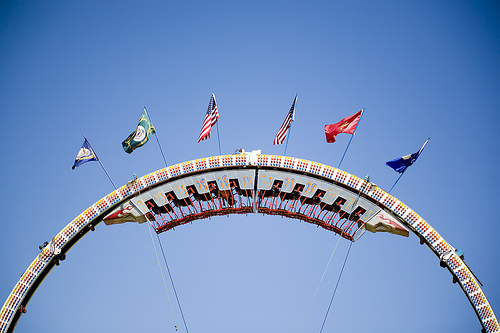
One of the major advantages of using a dSLR (digital single lens reflex) camera versus a EVF (electronic view finder) model is the perceived lack of shutter lag. Shutter lag is the delay between pressing the shutter release and the camera capturing the image. On a dSLR camera the shutter lag is measured in microseconds and is virtually undetectable. On an EVF camera (especially inexpensive point-and-shoot models), the delay can be over a second long. This can be especially maddening when trying to capture action shots.
When shooting today’s image of an amusement park ride I wanted to capture the train at the top of the loop. It took several attempts to to make this happen. Even though the ride’s support wires are not exactly centered, having the train lined up with them greatly improves the shot. The lack of shutter lag on my dSLR camera made this task much easier.
Canon 5D, Canon 24-105 f/4L lens – 1/1250 second, f/4, ISO 100
September 5, 2007
Where Does Your Inspiration Come From?
]]> 
As a photographer who shoots nearly every day, coming up with inspiration can be difficult at times. Much like writer’s block affects authors, there are days that I feel completely uninspired about what to shoot.
One way I combat this is to constantly be on the lookout for fresh ideas. Anyone who has spent time around me has probably noticed that I carry a small leather journal everywhere I go. Of the various things I keep notes of in this book is a list of photography ideas. During my day, when I think of an idea for a shot I jot down a note in the journal. These ideas can come from an idea while driving, a television commercial, a magazine, a scene in a movie, people walking down the street, etc. You get the idea.
Today’s image of a woman working at a desk is an example of this form of inspiration. I recently came across a copy of the original 1984 Apple Macintosh Owner’s Manual online. I was a huge fan of the original Mac (though I never owned one) and really enjoyed the figurative trip back in time by reviewing the manual. While going through the manual I came across a photo of a man working at a desk (with a Mac of course) shot from above (see the photo here). I really liked the image and thought that a similar shot would make a nice addition to my stock library. I made a note of the shot and then later when I had time I set it up in my studio.
Some might say that I wasn’t inspired, but rather simply copied someone else’s work. I understand their view and I could easily argue both sides of this discussion. In this case, I feel that using a 20+ year old image for inspiration and adding my own take on it is perfectly acceptable.
What about you? What do you do to inspire your photography? How do you keep from getting in a writer’s block type of rut?
Canon 5D, Canon 24-105 f/4L lens – 1/125 second, f/9, ISO 100
Labels: stock
September 2, 2007
London Bridge
]]> 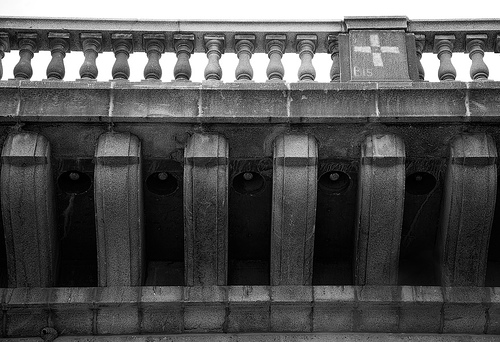
Canon 5D, Canon 70-200 f/4L lens – 1/125 second, f/4.5, ISO 50
LeggNet’s Digital Capture
© Rich Legg, Inc. All rights reserved.
August 31, 2007
The Root of All . . . Evil?
August 31, 2007
The Root of All . . . Evil?
]]> 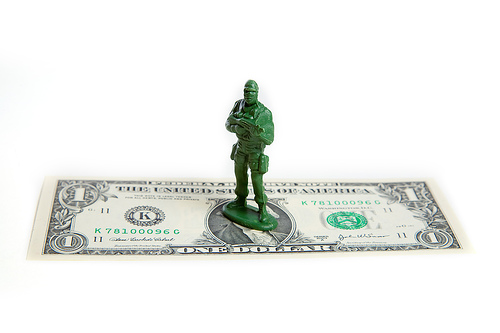
Canon 5D, Canon 24-105 f/4L lens – 1/125 second, f/14, ISO 100
LeggNet’s Digital Capture
© Rich Legg, Inc. All rights reserved.
August 30, 2007
Peaks and Valleys
August 29, 2007
Backlit with Sun
]]> 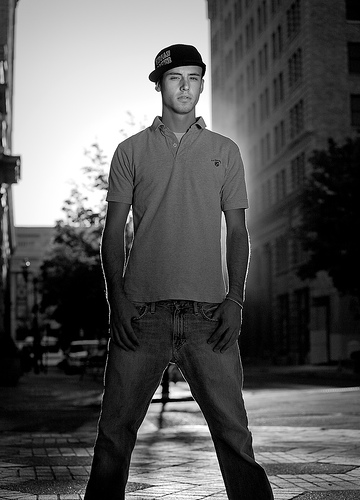
Here’s a quick tip for creating a dramatic portrait: Use the sun as your backlight.
I made this capture of Dean in downtown Salt Lake City by placing the setting sun at his back and then providing subtle fill light with a reflector. It can be a bit tricky to line up your camera and subject to avoid lens flare, but when done correctly it can provide nice results. On this shot, I particularly like the glowing outline around his body.
Canon 5D, Canon 70-200 f/4L lens – 1/1600 second, f/4.5, ISO 200
Labels: bw, photography, portrait, tutorial
August 28, 2007
Eclipsed
]]> 
Last night’s lunar eclipse as it transitioned from the penumbra to the umbra stage.
Canon 30D, Canon 70-200 f/4L with 1.4x extender – 1/50 second, f/11, ISO 100
LeggNet’s Digital Capture
© Rich Legg, Inc. All rights reserved.
August 27, 2007
Am I Killing the Photography Industry?
]]> 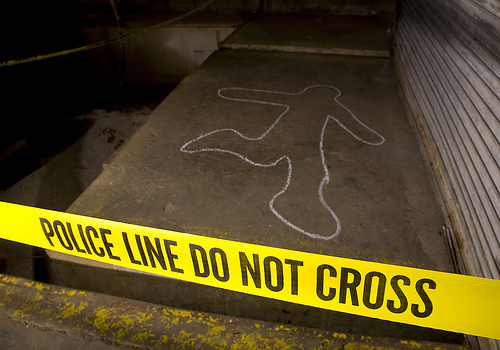
Are photographers such as myself killing the photography industry?
I follow numerous photography industry related blogs with my RSS reader. It seems that at least once a week I read an article about how “part-time”, “hobbyist” and “micro-stock” photographers are killing the photography industry. One particular quote I read recently on the Black Star Rising blog gives an example of what I am talking about:
“Feel free, by all means, to make beautiful nature images, photograph protests in your home town, or do a nice portrait of a family friend. However, if you have any respect for other creatives — and to tangentially ensure their longevity — your action of taking $50 for an assignment that should have been $500, or giving away photographs for access to the limited locations that are credential positions, is detrimental to your fellow creatives, and those whose work you admire.” (full text)
Though I do plenty of work for pay, my main source of income is in the real estate industry. Since I don’t make my full-time living as a photographer, should I not be charging at all? If I shoot a wedding for $500, am I damaging the business of the photographer who’s packages start at $3,000?
Another point that many “real” professional photographers make on a regular basis is that microstock websites such as iStockphoto.com are killing the industry. Their point is that selling images for as little as a dollar apiece via these websites is hurting the industry by devaluing photography in general. I strongly disagree with this view. I believe that the microstock sites have opened up professional photography to a whole segment of the population that previously either didn’t use photos in their designs or who illegally stole images from the internet. These designers can’t afford to spend $100 on up per image, but will readily pay a few dollars for a photo.
I believe we are witnessing a transformation in the photography industry brought on by technological advances in camera equipment and internet delivery. We can either embrace this change, or sit back and watch it pass on by.
What do you think? Are part-time and hobbyist photographers hurting the industry? Or, is this a natural metamorphosis brought on by the advances in technology and communication?
Canon 5D, Canon 24-105 f/4L lens – 1/60 second, f/9, ISO 100
Labels: istockphoto, photography, stock
August 27, 2007
Am I Killing the Photography Industry?
]]> 
Are photographers such as myself killing the photography industry?
I follow numerous photography industry related blogs with my RSS reader. It seems that at least once a week I read an article about how “part-time”, “hobbyist” and “micro-stock” photographers are killing the photography industry. One particular quote I read recently on the Black Star Rising blog gives an example of what I am talking about:
“Feel free, by all means, to make beautiful nature images, photograph protests in your home town, or do a nice portrait of a family friend. However, if you have any respect for other creatives — and to tangentially ensure their longevity — your action of taking $50 for an assignment that should have been $500, or giving away photographs for access to the limited locations that are credential positions, is detrimental to your fellow creatives, and those whose work you admire.” (full text)
Though I do plenty of work for pay, my main source of income is in the real estate industry. Since I don’t make my full-time living as a photographer, should I not be charging at all? If I shoot a wedding for $500, am I damaging the business of the photographer who’s packages start at $3,000?
Another point that many “real” professional photographers make on a regular basis is that microstock websites such as iStockphoto.com are killing the industry. Their point is that selling images for as little as a dollar apiece via these websites is hurting the industry by devaluing photography in general. I strongly disagree with this view. I believe that the microstock sites have opened up professional photography to a whole segment of the population that previously either didn’t use photos in their designs or who illegally stole images from the internet. These designers can’t afford to spend $100 on up per image, but will readily pay a few dollars for a photo.
I believe we are witnessing a transformation in the photography industry brought on by technological advances in camera equipment and internet delivery. We can either embrace this change, or sit back and watch it pass on by.
What do you think? Are part-time and hobbyist photographers hurting the industry? Or, is this a natural metamorphosis brought on by the advances in technology and communication?
Canon 5D, Canon 24-105 f/4L lens – 1/60 second, f/9, ISO 100
LeggNet’s Digital Capture
© Rich Legg, Inc. All rights reserved.
August 25, 2007
Ten Dollar Photograph
]]> 
Canon 5D, Canon 24-105 f/4L lens – 1/125 second, f/16, ISO 125
LeggNet’s Digital Capture
© Rich Legg, Inc. All rights reserved.
August 23, 2007
Photographing Babies? Get Down!
]]> 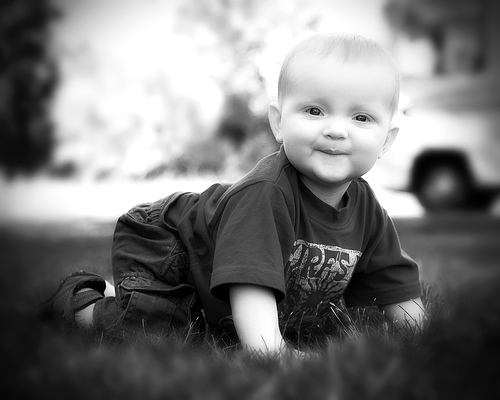
Here’s a quick and easy tip for photographing babies: Get Down!
By placing yourself at eye level with your subject you will create a much more natural and pleasing capture. As an added bonus, the child will likely be more interested in what you’re doing and you will have a much higher chance of capturing a great expression.
Today’s image of Christian is an example of this technique. During a church barbecue at a local park I noticed him crawling around in the grass and got down on his level. He immediately became curious of what I was doing and began watching every move I made. It was then fairly easy to capture a nice expression.
Canon 5D, Canon 24-105 f/4L lens – 1/200 second, f/4, ISO 100
Labels: bw, children, photography, tutorial
August 22, 2007
It Had to Happen: A Corrupt Memory Card
]]> 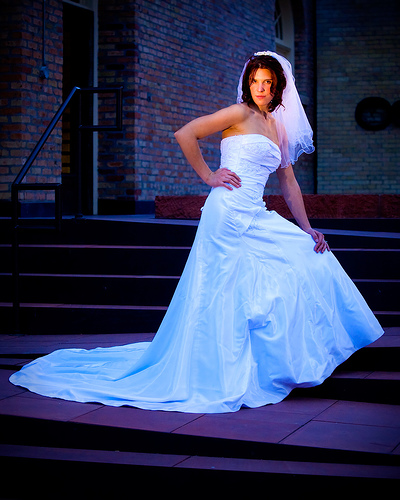
Michelle and I spent Monday evening in downtown Salt Lake City photographing recent bride Militia. The evening was beautiful and we were able to capture some nice images of Milita using tungsten lighting.
The first step when I return from a shoot is to download the contents of the memory card to my Mac. On Monday night, this was when I realized I had a problem. When I went to open the card in the Mac Finder (similar to File Explorer for you Windows users), the Finder would immediately close. After having this happen a couple of times I quickly became worried. I ejected the card and placed it back into my camera. When I attempted to view the images on the camera, I received an error. Uh oh!
Thankfully, at this point I recalled a blog post last month by photographer Thomas Hawk recounting an eerily similar experience. I took a quick trip to Google and found the post (read it here). In the post Thomas details his use of DATARESCUE’s PhotoRescue program to recover the contents of his card. I followed the link he provided and downloaded the program.
I like stories with happy endings and this one is no exception. The program worked flawlessly and was able to recover the complete contents of my memory card. It even showed me the recovered images before requiring me to purchase it, so I knew it would work before handing over the $29 purchase price. This is definitely a program that any serious photographer should have in their kit.
In recap, here are the steps Thomas gives when encountering a corrupt memory card:
- Don’t panic. Like I said. You will probably be able to get the shots back. Don’t let it ruin whatever you are doing or shooting.
- Once you know that you need to recover photos from a card stop using that card immediately. Don’t try to reformat it. Don’t reuse it. Put it away and wait until you get home where you can try recovery. If you do keep shooting with the card you might overwrite some of the data and be unable to recover some of your photos.
- When you get home run DataRescue’s PhotoRescue. You can download and run this software for free on your memory card.
- If PhotoRescue can recover your images they will show you the thumbnails of the images. At this point you will need to buy the software if you want to use it to actually recover your images. The software cost’s $29 but usually this is a small price to pay to have all of your images back.
Today’s featured image is a capture from the Monday night shoot. Militia was lit using two handheld tungsten lights. By setting the camera’s manual white balance control to the temperature of the tungsten light, a natural (read: un-photoshopped) purple hue fell over the rest of the scene.
Canon 5D, Canon 70-200 f/4L lens – 1/200 second, f/4, ISO 250
Labels: photography, salt lake city, tutorial, wedding
August 22, 2007
It Had to Happen: A Corrupt Memory Card
]]> 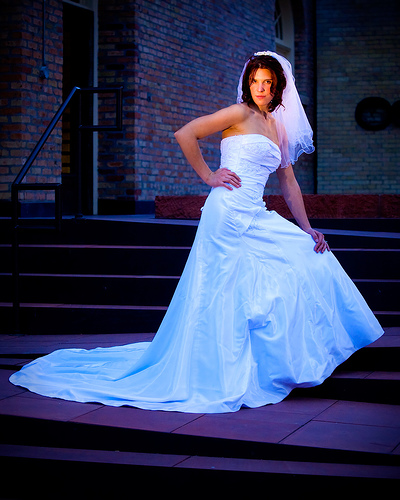
Michelle and I spent Monday evening in downtown Salt Lake City photographing recent bride Militia. The evening was beautiful and we were able to capture some nice images of Milita using tungsten lighting.
The first step when I return from a shoot is to download the contents of the memory card to my Mac. On Monday night, this was when I realized I had a problem. When I went to open the card in the Mac Finder (similar to File Explorer for you Windows users), the Finder would immediately close. After having this happen a couple of times I quickly became worried. I ejected the card and placed it back into my camera. When I attempted to view the images on the camera, I received an error. Uh oh!
Thankfully, at this point I recalled a blog post last month by photographer Thomas Hawk recounting an eerily similar experience. I took a quick trip to Google and found the post (read it here). In the post Thomas details his use of DATARESCUE’s PhotoRescue program to recover the contents of his card. I followed the link he provided and downloaded the program.
I like stories with happy endings and this one is no exception. The program worked flawlessly and was able to recover the complete contents of my memory card. It even showed me the recovered images before requiring me to purchase it, so I knew it would work before handing over the $29 purchase price. This is definitely a program that any serious photographer should have in their kit.
In recap, here are the steps Thomas gives when encountering a corrupt memory card:
- Don’t panic. Like I said. You will probably be able to get the shots back. Don’t let it ruin whatever you are doing or shooting.
- Once you know that you need to recover photos from a card stop using that card immediately. Don’t try to reformat it. Don’t reuse it. Put it away and wait until you get home where you can try recovery. If you do keep shooting with the card you might overwrite some of the data and be unable to recover some of your photos.
- When you get home run DataRescue’s PhotoRescue. You can download and run this software for free on your memory card.
- If PhotoRescue can recover your images they will show you the thumbnails of the images. At this point you will need to buy the software if you want to use it to actually recover your images. The software cost’s $29 but usually this is a small price to pay to have all of your images back.
Today’s featured image is a capture from the Monday night shoot. Militia was lit using two handheld tungsten lights. By setting the camera’s manual white balance control to the temperature of the tungsten light, a natural (read: un-photoshopped) purple hue fell over the rest of the scene.
Canon 5D, Canon 70-200 f/4L lens – 1/200 second, f/4, ISO 250
LeggNet’s Digital Capture
© Rich Legg, Inc. All rights reserved.
August 21, 2007
Top Shelf
]]> 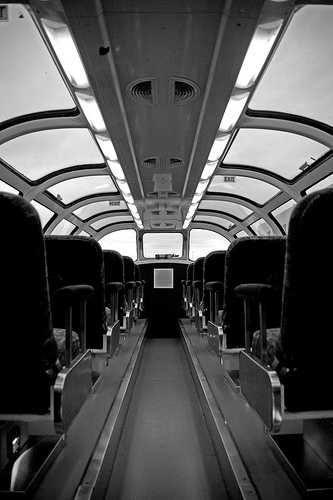
Photographed aboard the Alaska Railroad en route to Denali National Park.
Canon 5D, Canon 24-105 f/4L lens – 1/30 second, f/4, ISO 500
August 20, 2007
Framed
]]> 
I shot this portrait of Jenna for a request I received from a graphic designer. For lighting, I used a simple three monolight setup in my studio:
– Softbox main-light to right of camera
– Umbrella fill-light above and behind camera
– Single light on backdrop
Canon 5D, Canon 24-105 f/4L lens – 1/125 second, f/10, ISO 100
August 17, 2007
Crime Scene Tape on a Bride?
]]> 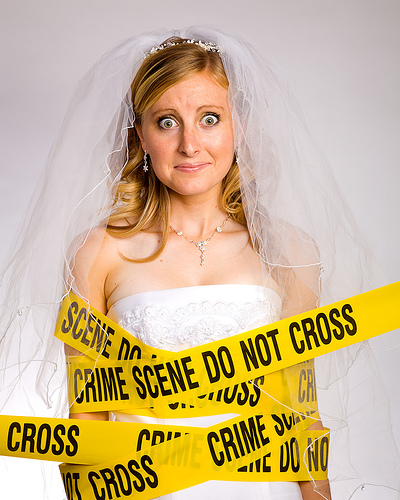
I spent some time today working with Jenna on some stock photos. I had this roll of crime scene tape sitting around from an earlier shoot and thought , “Why not?”. I don’t know what use this shot has as a stock image, but I like it.
Canon 5D, Canon 24-105 f/4L lens – 1/125 second, f/11, ISO 100
August 15, 2007
A Beautiful Weed
August 15, 2007
A Beautiful Weed
]]> 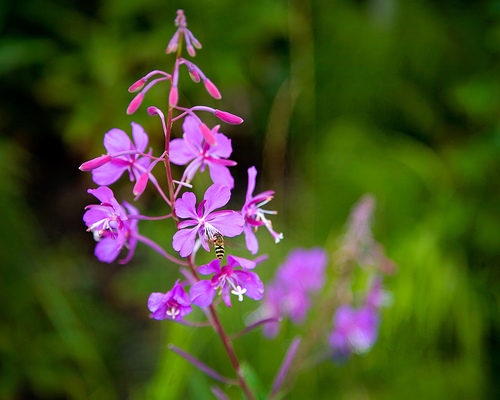
Canon 5D, Canon 24-105 f/4L lens – 1/125 second, f/4, ISO 100
LeggNet’s Digital Capture
© Rich Legg, Inc. All rights reserved.
August 14, 2007
Guest Contributor: ElisaRae.com
]]> 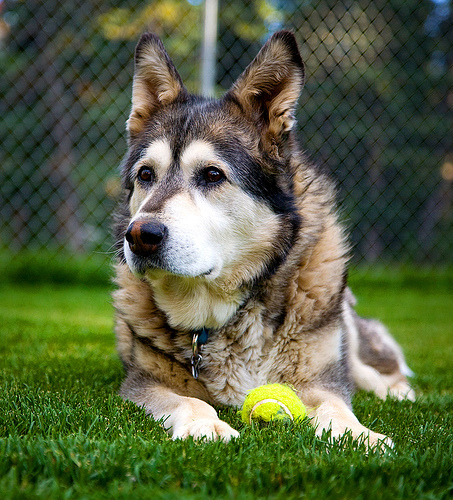
Today is one of the rare occasions when the featured image is not one I took.
While reviewing photos from my recent Alaska trip, I came across a series of dog shots that didn’t look familiar. That’s when I remembered that my 12 year old daughter Elisabeth had borrowed my camera while we were visiting my sister in the town of Healy. It was great to see the different perspective that she took while chasing the many dogs around the yard with a 5D in hand.
Of all the shots she took (read: LOTS!), this shot of Dog (pronounced dee-oh-gee) is my favorite. I love the low vantage point with the narrow depth of field. The tennis ball provides a great finishing touch. Elisabeth has a great natural eye and I look forward to seeing how her photography evolves in the future.
For more examples of her work, visit her frequently rarely updated blog at elisarae.com.
Canon 5D, Canon 24-105 f/4L lens – 1/500 second, f/4, ISO 400
August 14, 2007
Guest Contributor: ElisaRae.com
]]> 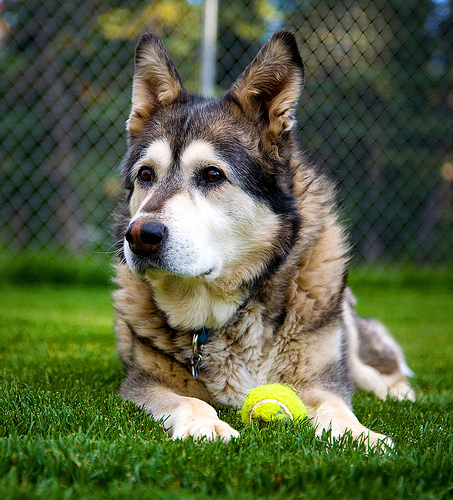
Today is one of the rare occasions when the featured image is not one I took.
While reviewing photos from my recent Alaska trip, I came across a series of dog shots that didn’t look familiar. That’s when I remembered that my 12 year old daughter Elisabeth had borrowed my camera while we were visiting my sister in the town of Healy. It was great to see the different perspective that she took while chasing the many dogs around the yard with a 5D in hand.
Of all the shots she took (read: LOTS!), this shot of Dog (pronounced dee-oh-gee) is my favorite. I love the low vantage point with the narrow depth of field. The tennis ball provides a great finishing touch. Elisabeth has a great natural eye and I look forward to seeing how her photography evolves in the future.
For more examples of her work, visit her frequently rarely updated blog at elisarae.com.
Canon 5D, Canon 24-105 f/4L lens – 1/500 second, f/4, ISO 400
LeggNet’s Digital Capture
© Rich Legg, Inc. All rights reserved.
August 13, 2007
Adding Depth to Photos with a Blurred Foreground
]]> 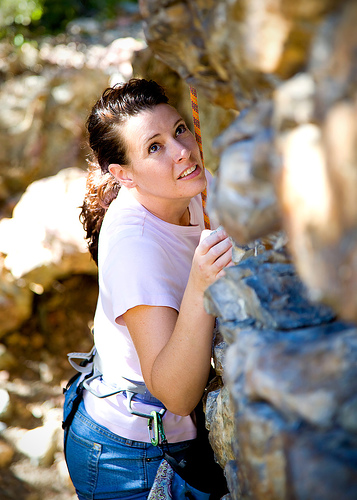
A simple way to add depth to photos is to use a combination of narrow depth-of-field and foreground objects. The resulting blurred foreground draws increased attention onto the subject of the photo, creating a more appealing image.
Today’s capture of Michelle rock climbing is a use of this technique. I shot this with my lens wide open at f/4 (at 105mm) to create the narrowest possible focus point. I then framed Michelle between the blurred foreground and distant background. The resulting natural frame draws the viewer’s focus onto Michelle’s face.
If I had shot the same photo at a smaller aperture, the foreground rocks would be more in focus. These rocks would then become a distraction and hurt, rather than help, the composition.
Canon 5D, Canon 24-105 f/4L lens – 1/200 second, f/4, ISO 250
Labels: photography, tutorial
August 13, 2007
Adding Depth to Photos with a Blurred Foreground
]]> 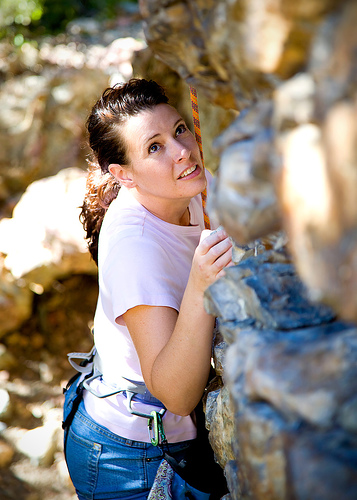
A simple way to add depth to photos is to use a combination of narrow depth-of-field and foreground objects. The resulting blurred foreground draws increased attention onto the subject of the photo, creating a more appealing image.
Today’s capture of Michelle rock climbing is a use of this technique. I shot this with my lens wide open at f/4 (at 105mm) to create the narrowest possible focus point. I then framed Michelle between the blurred foreground and distant background. The resulting natural frame draws the viewer’s focus onto Michelle’s face.
If I had shot the same photo at a smaller aperture, the foreground rocks would be more in focus. These rocks would then become a distraction and hurt, rather than help, the composition.
Canon 5D, Canon 24-105 f/4L lens – 1/200 second, f/4, ISO 250
LeggNet’s Digital Capture
© Rich Legg, Inc. All rights reserved.
August 10, 2007
T.G.I.F.
]]> 
Kick off your shoes and enjoy your weekend!
Canon 5D, Canon 24-105 f/4L lens – 1/60 second, f/9, ISO 50
Labels: stock
August 10, 2007
Quick Note: Memory Stick Pro?
I recently came across a 512mb Sony Memory Stick PRO in one of my old camera bags. If you have a need for this relatively small stick, drop me a note at rich(at)leggnet.com and I’ll send it off to you for free (if you’re in the U.S.).
-RichUPDATE: I received a few emails. Ryon was first, so he gets the card. Thanks everyone.
LeggNet’s Digital Capture
© Rich Legg, Inc. All rights reserved.
August 9, 2007
Propulsion
]]> 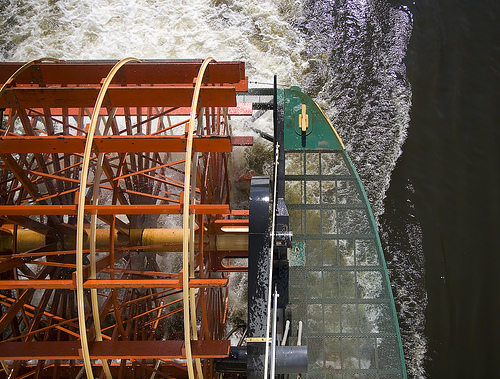
Captured off the stern of the Riverboat Discovery in Fairbanks, Alaska.
Canon 5D, Canon 24-105 f/4L lens – 1/1600, f/4, ISO 160
LeggNet’s Digital Capture
© Rich Legg, Inc. All rights reserved.
August 7, 2007
Erik
]]> 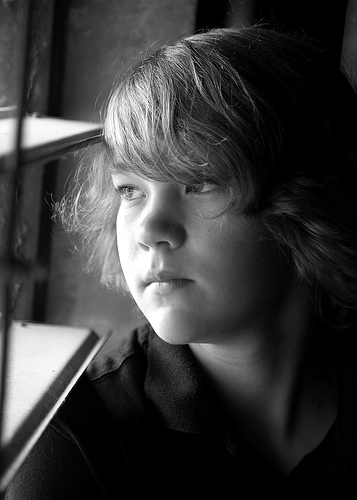
Yesterday’s post of the crime scene photo shoot created some strong reactions. Here are a few that I received:
“Absolutely disturbing” -Dave
“Love it!” -Kris
“We should have mixed blood” -Harley
“Sick and wrong” -Michelle
“Love the lighting” -Scott
“It was great!” -Erik
The last comment quoted above was from Erik, the “Victim” in the shots. Erik is the teenage son of a regular reader of LeggNet’s Digital Capture. He had a great time modeling for the shoot and is looking forward to working with us again. Laying on a concrete floor for extended periods of time while lighting is set up and adjusted can be mundane, yet Erik was extremely patient and cooperative to work with.
Today’s image is one I shot of Erik between scenes at the Saturday shoot. While walking past this window, I saw this great light and quickly had Erik pose for a portrait. It was nice to capture a friendly photo of him in the midst of all the simulated carnage.
Canon 5D, Canon 24-105 f/4L lens – 1/20 second, f/4, ISO 400
LeggNet’s Digital Capture
© Rich Legg, Inc. All rights reserved.

